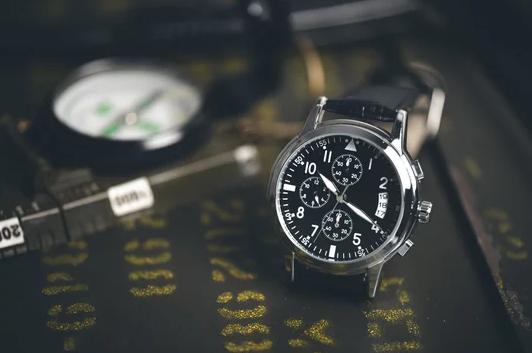Military time, also known as the 24-hour clock, is a system that eliminates the ambiguity between AM and PM by using a continuous count from 00:00 to 23:59. This format is widely used in military, healthcare, aviation, and other industries where precision is crucial. In this blog post, we’ll break down how to read a military time chart, explain how it works, and highlight its benefits.
What Is Military Time?
Military time is a 24-hour format of telling time, as opposed to the 12-hour format most people are accustomed to in everyday life. In military time, the day starts at midnight, denoted as 00:00, and continues until 23:59, which represents 11:59 PM.
For example, instead of writing 3:00 PM, military time records it as 15:00. The system eliminates the need for the AM and PM distinctions because each hour of the day is represented by a unique number.
Military Time Conversion Basics
Understanding how to convert military time to the standard 12-hour format is the key to reading a military time chart. Here are a few simple steps to help you convert military time to standard time:
- For Hours Between 00:00 and 11:59
These hours correspond to the morning (AM) in the 12-hour clock system. For instance, 07:30 is the same as 7:30 AM in the standard clock. - For Hours Between 12:00 and 23:59
These represent the afternoon and evening hours (PM). To convert military time in this range, subtract 12 from the hour. For example, 15:00 becomes 3:00 PM, and 22:00 becomes 10:00 PM. - Midnight and Noon
Military time starts the day at 00:00, which represents midnight. However, noon is written as 12:00, just like in the 12-hour clock system.
To summarize the conversion:
- 00:00 = 12:00 AM (Midnight)
- 01:00 = 1:00 AM
- 12:00 = 12:00 PM (Noon)
- 15:00 = 3:00 PM
- 23:59 = 11:59 PM
Reading a Military Time Chart
Military time charts are straightforward and easy to use. They provide a side-by-side comparison of military time and its corresponding standard time, making conversion a breeze. Here’s a quick example:
Military Time Chart
| Military Time | Standard Time |
|---|---|
| 00:00 | 12:00 AM (Midnight) |
| 01:00 | 1:00 AM |
| 02:00 | 2:00 AM |
| 03:00 | 3:00 AM |
| 04:00 | 4:00 AM |
| 05:00 | 5:00 AM |
| 06:00 | 6:00 AM |
| 07:00 | 7:00 AM |
| 08:00 | 8:00 AM |
| 09:00 | 9:00 AM |
| 10:00 | 10:00 AM |
| 11:00 | 11:00 AM |
| 12:00 | 12:00 PM (Noon) |
| 13:00 | 1:00 PM |
| 14:00 | 2:00 PM |
| 15:00 | 3:00 PM |
| 16:00 | 4:00 PM |
| 17:00 | 5:00 PM |
| 18:00 | 6:00 PM |
| 19:00 | 7:00 PM |
| 20:00 | 8:00 PM |
| 21:00 | 9:00 PM |
| 22:00 | 10:00 PM |
| 23:00 | 11:00 PM |
| 23:59 | 11:59 PM |
By referring to a military time chart, you can quickly find the equivalent standard time without needing to do mental conversions.
Check out a Military Phonetic Alphabet
Why Use Military Time?
Military time has practical advantages in several fields, such as the military, healthcare, and transportation, where precise and accurate timekeeping is vital. Here are some key benefits:
- Avoids Confusion
The 24-hour format eliminates the ambiguity between AM and PM, reducing the likelihood of miscommunication. In fields where timing is critical, such as medical records or flight schedules, this precision is invaluable. - Efficiency in Global Communication
Military time is universally understood, making it easier to coordinate across different time zones. This is particularly useful for international businesses, airlines, and the military, where personnel in different countries need to sync their activities without confusion. - Streamlines Scheduling
When using military time, there is no need to clarify whether an event happens in the morning or evening. This simplifies scheduling, especially in workplaces that operate 24 hours a day. - Reduces Errors
Because military time removes the overlap between two 12-hour periods, it greatly reduces the chance of scheduling errors. In industries where timing is critical, this is a crucial advantage.
How to Use a Military Time Chart Effectively
To get the most out of a military time chart, it helps to familiarize yourself with some key times, as this will speed up your ability to recognize conversions instantly. Here’s a quick guide to some commonly used times:
- 6:00 AM = 06:00
- 9:00 AM = 09:00
- 12:00 PM (Noon) = 12:00
- 3:00 PM = 15:00
- 6:00 PM = 18:00
- 10:00 PM = 22:00
If you find yourself needing to use military time often, it’s worth memorizing these to make conversions quicker. For the rest, you can always refer to a printed or digital military time chart.
Military Time in Different Industries
Military time is prevalent in many industries beyond the military itself. Here are some examples:
- Healthcare
Hospitals and medical professionals rely on military time for recording patient information, shift changes, and medication schedules to avoid confusion, particularly when dealing with life-or-death situations. - Aviation
The aviation industry uses military time to prevent errors in flight scheduling and avoid any misunderstanding between time zones. Accurate scheduling helps ensure that flights are on time and prevent mix-ups. - Transportation
In public transportation, such as trains and buses, military time is often used to ensure accurate schedules and prevent passengers from boarding at the wrong time. - Emergency Services
Police, firefighters, and paramedics all use military time to streamline operations and maintain accurate time logs. This precise timing can be critical when responding to emergencies. - International Communication
Businesses operating across multiple time zones often use military time to coordinate meetings and events without the need for constant clarification regarding local time.
How to Convert Military Time Manually
While a military time chart is handy, you may sometimes need to convert military time on the fly. Here’s a quick way to do it manually:
- For AM times (00:00 to 11:59): Simply read the number as is.
- For PM times (12:00 to 23:59): Subtract 12 from the military time hour. For instance, 17:00 minus 12 equals 5:00 PM.
By practicing these conversions, you’ll soon be able to read military time effortlessly, even without a chart.
Check out the Military Time Now
Learning how to read a military time chart is a valuable skill, especially in industries where time precision is essential. Whether you’re coordinating events across different time zones or simply wanting to eliminate the AM/PM confusion, military time provides a clear, efficient way to track time. Start by understanding the basic conversion rules and familiarizing yourself with common times. Over time, you’ll find that military time becomes second nature, simplifying your scheduling and communication.

